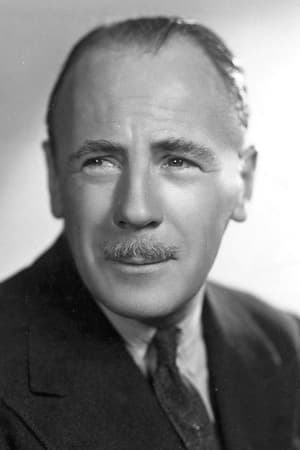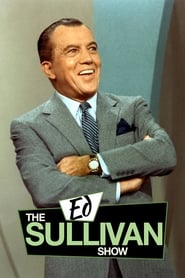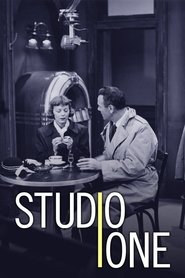
Roland Young
From Wikipedia, the free encyclopedia Roland Young (11 November 1887 – 5 June 1953) was an English actor. Young made his first stage appearance in London's West End in Find the Woman in 1908, and in 1912 he made his Broadway debut in Hindle Wakes. He appeared in two comedies written for him by Clare Kummer, Good Gracious Annabelle! (1916) and A Successful Calamity (1917) before he served with the United States Army during World War I. He returned to New York when the war ended, and married Kummer's daughter, Frances. For the next few years he alternated between New York and London. He made his film debut in the 1922 silent film Sherlock Holmes, in which he played Watson opposite John Barrymore as Holmes. He signed a contract with Metro-Goldwyn-Mayer and made his talkie debut in The Unholy Night (1929), directed by Lionel Barrymore. He was loaned to Warner Bros. to appear in Her Private Life, with Billie Dove and Fox Film Corporation, winning critical approval for his comedic performance as Jeanette MacDonald's husband in Don't Bet on a Woman. He was again paired with MacDonald in the film version of Good Gracious Annabelle!, titled Annabelle's Affairs. He appeared in Cecil B. de Mille's The Squaw Man, and played opposite Alfred Lunt and Lynn Fontanne in The Guardsman (both 1931). He appeared with Evelyn Brent in Columbia's The Pagan Lady (1932) and Pola Negri in RKO's A Woman Commands (1932). His final film under his MGM contract was Lovers Courageous (1932), opposite Robert Montgomery. In 1933 he had a starring role in the risqué comedy for Fox Film called Pleasure Cruise along side Genevieve Tobin. Young began to work as a freelance performer and found himself in constant demand. He appeared with Jeanette MacDonald, Genevieve Tobin and Maurice Chevalier in One Hour With You (1932) and with Kay Francis in Street of Women (1932). Alexander Korda invited him to return to Britain to make his British film debut in Wedding Rehearsal (1932). He returned to Hollywood and appeared in a diverse group of films that included comedies, murder mysteries, and dramas, and also worked on Broadway. Among his films of this period were Ruggles of Red Gap (1935), David Copperfield (1935) (playing Uriah Heep), and the H.G. Wells fantasy The Man Who Could Work Miracles (1936). In 1937, he achieved one of the most important successes of his career in Topper, as a bank president haunted by the ghosts of his clients, played by Cary Grant and Constance Bennett. It was one of the most successful films of the year, and Young was nominated for the Academy Award for Best Supporting Actor. Topper's wife was played by Billie Burke, who wrote in her memoir that Young "was dry and always fun to work with". They also appeared together in The Young in Heart (1938), and both of the Topper sequels, Topper Takes a Trip (1938) and Topper Returns (1941). He continued working steadily through the 1940s, playing small roles opposite some of Hollywood's leading actresses, such as Joan Crawford, Marlene Dietrich, Paulette Goddard and Greta Garbo in her final film, Two-Faced Woman (1941). In the 1950s, Young appeared on several episodic television series, including Lux Video Theatre, Studio One, Pulitzer Prize Playhouse and The Chevrolet Tele-Theatre.
Known For
Credits
- 1994 · That's Entertainment! III as (archive footage)
- 1953 · That Man from Tangier as George
- 1951 · St. Benny the Dip as Matthew
- 1950 · Let's Dance as Edmund Pohlwhistle
- 1950 · Lux Video Theatre as Sumner
- 1950 · What's My Line? as Self
- 1949 · The Great Lover as C.J. Dabney
- 1948 · Studio One as Harold. Mummery
- 1948 · You Gotta Stay Happy as Ralph Tutwiler
- 1948 · The Ed Sullivan Show as Self
- 1948 · Bond Street as George Chester-Barrett
- 1945 · And Then There Were None as William Blore
- 1944 · Standing Room Only as Ira Cromwell
- 1943 · Forever and a Day as Henry Barringer
- 1942 · Tales of Manhattan as Edgar
- 1942 · They All Kissed the Bride as Marsh
- 1942 · The Lady Has Plans as Ronald Dean
- 1941 · Two-Faced Woman as Oscar 'O.O.' Miller
- 1941 · The Flame of New Orleans as Charles Giraud
- 1941 · Topper Returns as Cosmo Topper
- 1940 · No, No, Nanette as Mr. 'Happy' Jimmy Smith
- 1940 · The Philadelphia Story as Uncle Willie
- 1940 · Dulcy as Roger Forbes
- 1940 · Private Affairs as Amos Bullerton
- 1940 · Irene as Mr. Smith
- 1940 · Star Dust as Thomas Brooke
- 1940 · He Married His Wife as Bill Carter
- 1939 · The Night of Nights as Barry Keith-Trimble
- 1939 · Here I Am a Stranger as Professor Daniels
- 1939 · Yes, My Darling Daughter as Titus Jaywood
- 1938 · Topper Takes a Trip as Cosmo Topper
- 1938 · The Young in Heart as Col. Anthony 'Sahib' Carleton
- 1938 · Sailing Along as Anthony Gulliver
- 1937 · Ali Baba Goes to Town as Sultan
- 1937 · Topper as Cosmo Topper
- 1937 · King Solomon's Mines as Cmdr. John Good
- 1937 · Call It a Day as Frank Haines
- 1936 · Gypsy as Alan Brooks
- 1936 · Give Me Your Heart as Edward 'Tubbs' Barrow
- 1936 · The Man Who Could Work Miracles as George McWhirter Fotheringay
- 1936 · One Rainy Afternoon as Maillot
- 1936 · The Unguarded Hour as William "Bunny" Jeffers
- 1935 · Ruggles of Red Gap as Earl of Burnstead
- 1935 · David Copperfield as Uriah Heep
- 1934 · Here Is My Heart as Nicki
- 1933 · His Double Life as Priam Farrel
- 1933 · Blind Adventure as Holmes
- 1933 · Pleasure Cruise as Andrew Poole
- 1933 · A Lady's Profession as Lord Reginald Withers
- 1933 · They Just Had to Get Married as Hillary Hume
- 1932 · Hollywood on Parade No. A-5 as Self
- 1932 · Wedding Rehearsal as Reggie Buckley Candysshe - Marquis of Buckminster
- 1932 · Street of Women as Linkhorne 'Link' Gibson
- 1932 · This Is the Night as Gerald Gray
- 1932 · One Hour with You as Professor Olivier
- 1932 · A Woman Commands as King Alexander
- 1932 · Lovers Courageous as Jeffrey
- 1931 · The Guardsman as The Critic
- 1931 · The Pagan Lady as Dr. Heath
- 1931 · The Squaw Man as Sir John Applegate
- 1931 · Annabelle's Affairs as Roland Wimbleton
- 1931 · The Prodigal as Doc
- 1931 · Don't Bet on Women as Herbert Drake
- 1930 · New Moon as Count Strogoff
- 1930 · Madam Satan as Jimmy Wade
- 1929 · The Bishop Murder Case as Sigurd 'Erik' Arnesson
- 1929 · Wise Girls as Duke Merrill
- 1929 · The Unholy Night as Lord Montague
- 1929 · Her Private Life as Charteris
- 1926 · Camille: The Fate of a Coquette as Lord Kyne
- 1924 · Grit as Houdini Hart
- 1922 · Sherlock Holmes as Dr. Watson




